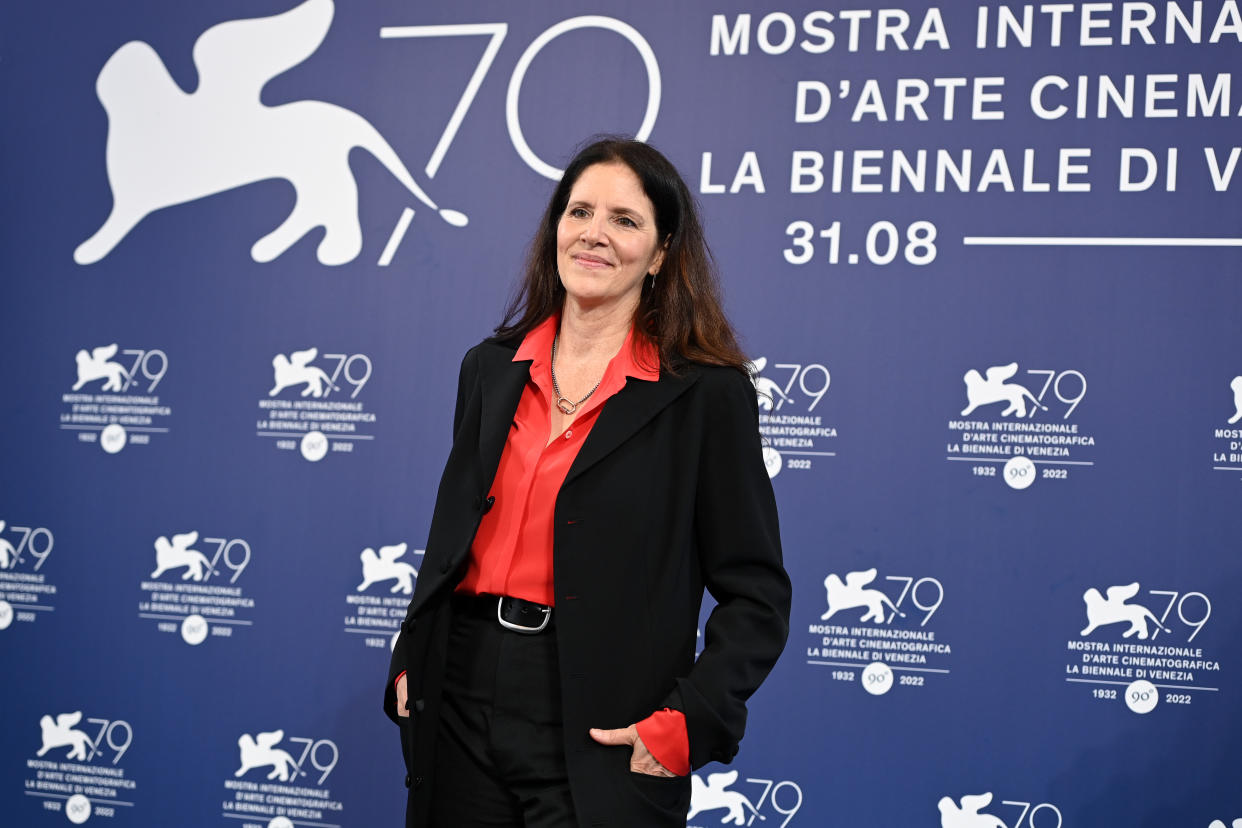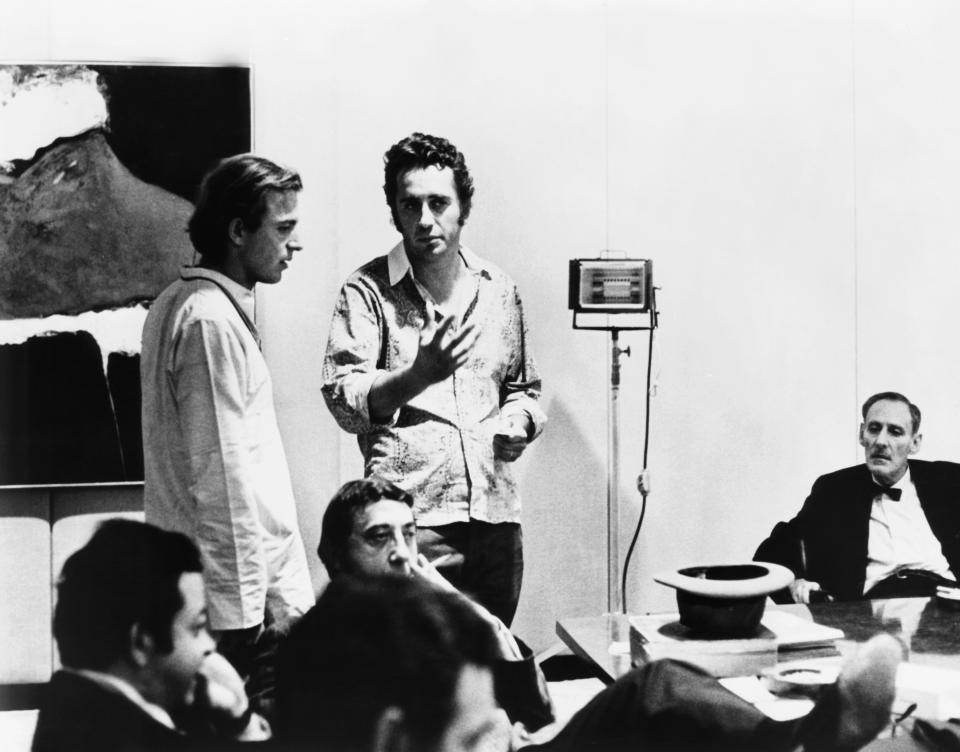Laura Poitras Becomes an Oscar Frontrunner with Her Nan Goldin Documentary

- Oops!Something went wrong.Please try again later.
- Oops!Something went wrong.Please try again later.
- Oops!Something went wrong.Please try again later.
- Oops!Something went wrong.Please try again later.
- Oops!Something went wrong.Please try again later.
Eight years ago, Edward Snowden became the centerpiece of the Oscar race for Best Documentary as the subject of director Laura Poitras’ eventual winner “Citizenfour.” This time, that centerpiece slot goes to Nan Goldin, the photographer and activist hero of Poitras’ “All the Beauty and the Bloodshed.”
The movie launched to rave reviews at Venice over the weekend and sneaked into a morning TBA slot on the last day of the Telluride Film Festival, where many audience members emerged in tears. That response is likely to continue as the movie travels to the Toronto International Film Festival and later New York, where it will be — appropriately enough — the festival’s centerpiece selection.
More from IndieWire
After Telluride and Venice, the Oscar Best Picture Race Remains Wide Open
Barry Jenkins Praises 'Aftersun' at Telluride: 'I'm a F*cking Wreck'
“All the Beauty and the Bloodshed” is in good hands. Participant Media produced the project and will release it this fall with Neon, which previously distributed her Julian Assange documentary “Risk.” Neon CEO Tom Quinn also spearheaded the successful “Citizenfour” campaign at Radius-TWC.
If Poitras were to win her second Best Documentary Oscar, she would be the first filmmaker to do so since Barbara Kopple in 1990. She won then for “American Dream,” which followed Kopple’s 1976 win for “Harlan County, USA.” (Producer Simon Chinn won two Oscars in the category more recently as producer of “Man on Wire” and “Searching for Sugar Man,” but Kopple was the last director to hit that milestone).
Commercial prospects for any documentary are hazy these days, but strong word-of-mouth and a timely, personal look at the opioid crisis should help Poitras’ movie stand out. Where “Citizenfour” treated Snowden’s evolution into a whistleblower as a real-time thriller, “All the Beauty and the Bloodshed” is a rousing survival story.
The movie simultaneously chronicles Goldin’s artistic genesis in the underground New York arts scene of the ‘70s and ‘80s alongside her more recent protests against the Sackler family and its Purdue Pharma, manufacturer of OxyContin. Poitras juggles a touching portrait of Goldin’s personal life and addiction struggles with footage of engrossing protests at major museums (including dramatic “die-ins” at the Met and Guggenheim, among the institutions that later rejected donations from the Sackler family).
Poitras assembled an absorbing look at the effectiveness of Goldin’s organization Prescription Addiction Intervention Now (P.A.I.N.). It also chronicles Goldin’s troubled youth, her sister’s suicide, and how the young photographer survived an abusive relationship by turning it into one of her greatest artworks. Goldin, who has a producing credit on the movie — putting her in Oscar contention as well — provides the film’s eloquent and candid voiceover. “Photography is usually better than sex,” she says.

Neon
The documentary branch holds Poitras in high regard, but already the field is loaded with contenders, including Neon’s own “Moonage Daydream,” the David Bowie documentary that premiered earlier this year at Cannes. Other major contenders from Sundance include “All That Breathes,” “The Janes,” and “Navalny” (HBO); “Descendant” (Netflix and Higher Ground), and “Riotsville, USA” (Magnolia).
However, the most prominent of the Sundance pack is festival hit “Fire of Love,” which follows ill-fated married volcanologists Katia and Maurice Krafft (National Geographic). Director Sara Dosa’s archival documentary recently crossed $1 million at the box office, making it the highest-grossing documentary of the year. While that may not be a huge win by pre-pandemic standards, it stands out when few documentaries succeed theatrically and sets the stage for the movie’s ultimate home on Disney+.
NatGeo took a victory lap at Telluride this year, flying its directors into town to attend an outdoor party at the festival that included an activation inspired by the film. The distributor also premiered Matthew Heineman’s “Retrograde,” a bracing closeup look at the aftermath of the U.S. withdrawal from Afghanistan from the perspective of young Afghan general Sami Sadat. (The release date has not been finalized.) Heineman shot much of the footage himself, traveling to the country several times over the past year in between promoting his acclaimed COVID hospital documentary “First Wave.” He is now developing a new project about musician Jon Batiste.
NatGeo also premiered a surprise work-in-progress cut of “Wild Life” from “Free Solo” directors Elizabeth Chai Vasarhelyi and Jimmy Chin. It’s a profile of outdoors adventuring couple Kris and Doug Tompkins (who launched brands Patagonia and North Face, among others) and created national parks in the Patagonia region of Chile. The movie will come out next year.
Telluride offered a wealth of other documentaries to wide acclaim, including Amazon’s poignant Mars rover portrait “Good Night Oppy” and “Wildcat,” which looks at a British veteran with PTSD who finds new meaning in rehabilitating an orphaned baby ocelot. “Control” director Anton Corbijn makes his documentary debut with “Squaring the Circle: The Story of Hipgnosis,” an overview of the London studio that designed iconic album covers for Pink Floyd and Led Zeppelin, while another music-themed documentary, “If These Walls Can Sing,” recounts the story of Abbey Road Studios.
Distributors remain wary of the documentary market, but they still need movies. Among those they’re circling is “Icarus: The Aftermath,” director Bryan Fogel’s follow-up to his Oscar-winning “Icarus.” It looks at Russian whistleblower Grigory Rodchenkov as he deals with the fallout of speaking out against Russia’s doping scandal that saw the country banned from the Olympics. Netflix released “Icarus” in 2017, but several buyers have expressed interest in the sequel and attended its patron screening premiere on the first day of Telluride.

Courtesy Everett Collection
And then there’s “Sr.,” the bittersweet black-and-white look at cult filmmaker Robert Downey, Sr. from “American Movie” director Chris Smith. The movie, which recaps the director’s career and follows him to his deathbed, also focuses on his relationship with his very famous son, Robert Downey, Jr., who attended Telluride to support the movie and participated in several Q&As. While some buyers were uncertain about whether the “Avengers” factor was sufficient to turn the movie into a commercial success, it is expected to close a deal soon and will next screen at NYFF with Downey Jr. again in attendance.
One documentary initially expected at Telluride was “Stutz,” a reportedly intimate documentary directed by Jonah Hill and based around meetings with his therapist. The movie has not surfaced in any TBA slots at the festival, possibly because Telluride’s emphasis on in-person talent impacted its selection after Hill announced he would not promote the movie or other future projects due to his anxiety attacks. Regardless, Netflix, which recently acquired the movie, still plans to release it in the coming months and it could surface at another fall festival. The year in documentary is far from over.
Best of IndieWire
Sign up for Indiewire's Newsletter. For the latest news, follow us on Facebook, Twitter, and Instagram.

